Payment tracking
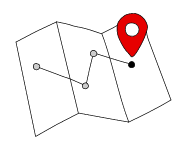
Payment Tracking
Track your payments made through multiple banks via E-Banking and stay informed in real time about statuses, fees, and updated exchange rates.
End-to-end tracking, from payment initiation to receipt by the beneficiary.
Free check of your payment status via Digital Banking.
Details on fee deductions and currency conversions.
Payment Tracking (SWIFT gpi)
Track your international payments in real time
Take advantage of SWIFT global payments innovation (gpi) and stay informed in real time about the status of your payments, current fees, and conversion rates.
Payment Tracking in Brief
Track your international payments in real time
Track your payments made through multiple banks via e-banking and receive real-time updates on statuses, fees, and exchange rates.
Payment Tracking in brief

End-to-end tracking
From payment initiation to receipt by the recipient
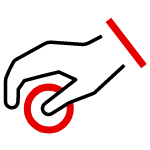
Free
Check the status of your payments for free via E-Banking

.Works for inbound and outbound payments.
Based on the SWIFT Global Payments Innovation Initiative (SWFIT gpi).
No tracking is possible for SEPA payments.
Only partial tracking is possible for domestic payments in USD or EUR.
Generally, all other payments can be tracked.
How does Payment Tracking work?
Log in to E-Banking.
Select an existing international payment or enter a new payment.
Click "Search."
Click "Track this transaction" and check the status of your payment at any time.
Private client?
Discover our services for private clients for payment transactions in Switzerland and abroad.
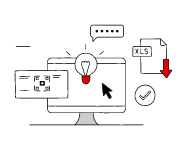
QR Invoices
The QR code on the payment slip contains all the important information for your payment. Simply scan it and save yourself the hassle of entering invoice details.
Simply scan via Mobile Banking or E-Banking
No need to enter the account or reference number
Verify and validate the payment digitally
Pay your QR-bills
The QR-bill for a digital future
Since June 30, 2020, the QR-bill has made it easier for you to pay and issue invoices. As of September 30, 2022, the orange and red payment slips have been abolished and replaced throughout Switzerland by the QR-bill.

Simple and fast
Generate, print, and send QR invoices online on the
QR Billing
Issuing your QR-bills is simple and free with the QR Portal or via invoicing software.
QR Billing Options
To use QR-bills for your invoicing, you generally have two options: either use your own invoicing software or create QR-bills on the GCHB QR Portal. It's simple and free.
GCHB QR Portal
The GCHB QR Portal allows billers with a UBS or CS account without invoicing software to create their QR-bills free of charge and without having to log in to different platforms. Your invoices can be simple or include multiple payment sections with different billing information: test and issue your QR-bills yourself. The QR Portal also allows you to change your account number to a QR-IBAN, create a debtor list, and view issued and received invoices.
QR-bills created via the GCHB QR Portal already contain addresses structured in accordance with the new guidelines.
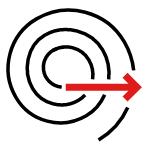
Simple
Create payment slips that meet Swiss standards, without having to log in.

Fast
Use templates and Excel files to create personalized payment slips or complete invoices in no time.
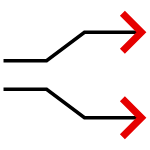
Flexible
Whether simple or fully pre-filled payment slips, you can download them in PDF format, print them, or send your invoices electronically via
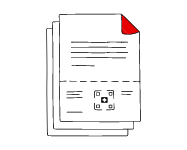
Who is the QR portal for?
The QR portal is intended for all invoice issuers with a GCHB or CS account, but without invoicing software:
SMEs, associations, charities
Self-employed individuals, individuals, and sole proprietorships
For occasional invoice sending
One portal, many possibilities
A payment slip adapted to every situation
There are input windows for different situations:
Backup: Easily and quickly create payment slips that you can then complete by hand.
Available in all variants: simple and complex slips, with or without eBill compatibility. You can create all the variants you need.
As a complete invoice: Create a personalized invoice with a logo, letterhead, and payment slip.
Efficient data entry
Scan or upload one of your payment slips and save yourself the hassle of manually entering payment information.
Upload templates saved last time and create similar payment slips in a snap.
Upload your Excel files and create customized payment slips or complete invoices.
Download options
Download personalized payment slips in PDF format or as a ZIP file with individual data.
Download the debtor list with the references used in Excel or PDF format to easily clear incoming payments.
Delivery options
Print payment slips on perforated paper and mail them.
Send the PDF to a print shop for printing.
Send invoices in eBill format.
Other Features
Resources for Invoice Issuers
View QR-IBAN and References
Convert Account Numbers to QR-IBAN
Create QR and Creditor References
View Payment Slips Created on Another Portal or Software Before Sending
Preview the Final Result of the Slip During Entry
Resources for Invoice Recipients
View Received QR-Invoices Before Payment
Data Security
Under the QR portal's terms of use, GCHB is committed to retaining the data entered and appearing on invoices only for the duration necessary to create the payment slip and not evaluating it.
Use your own invoicing software
To create QR-invoices using your accounting software, please note the following:
QR-invoice-compatible software: Ensure your accounting software supports QR-invoices. Contact your software vendor if in doubt.
Account reporting format: For automatic debtor reconciliation, you must request GCHB in advance to convert the receipt to the camt.054 email message format.
Access camt account reporting
Printing: Use white perforated paper. Ensure you print in the original format. Test: To ensure your transition to QR-bills goes as smoothly as possible, please use our free test form before sending your first QR-bill and send us samples of your QR-bills to the following address:
UBS Switzerland AG
Client Lifecycle Services, E-Contracts
PO Box
US-8098 NY
Use the platform
Structured Addresses in QR-bills
New guidelines for QR-bills will come into effect on November 21, 2025: from this date, only structured addresses may be used in the Swiss QR code. If you are still generating QR-bills with unstructured address data using your software, these must be converted to structured addresses. To ensure that your invoices can continue to be paid smoothly after September 30, 2026, we recommend making this change as soon as possible.
Structured Addresses in Payment Orders
Prepare Your Software for the New Structured Address Requirements
Background
To meet the requirements of global regulatory authorities for more transparent monitoring and prevention of money laundering, the Swiss financial center has decided that structured address data is required for payment transactions. This applies to all address fields of the parties involved (debtor, creditor, and financial institutions) in a payment order, both nationally and internationally, via SIC, SWIFT, and SEPA.
What do you need to do? Clients who create payment orders using their own accounting software (pain.001, pain.008 SDD, or MT101) and submit them to UBS must ensure that their software has been updated to comply with the new market requirements so that the orders contain structured address data by November 14, 2026 at the latest.
As of November 14, 2026, if payment orders are not structured as expected, UBS will no longer be able to process them.
Please note the following information when creating QR-bills using the software.
Address Data Structuring Options When Creating Files with Own Software
GCHB supports three different options for structuring address data in pain.001 and pain.008 SDD payment files in accordance with the new requirements. The requirements for SWIFT MT101 can be found below.


